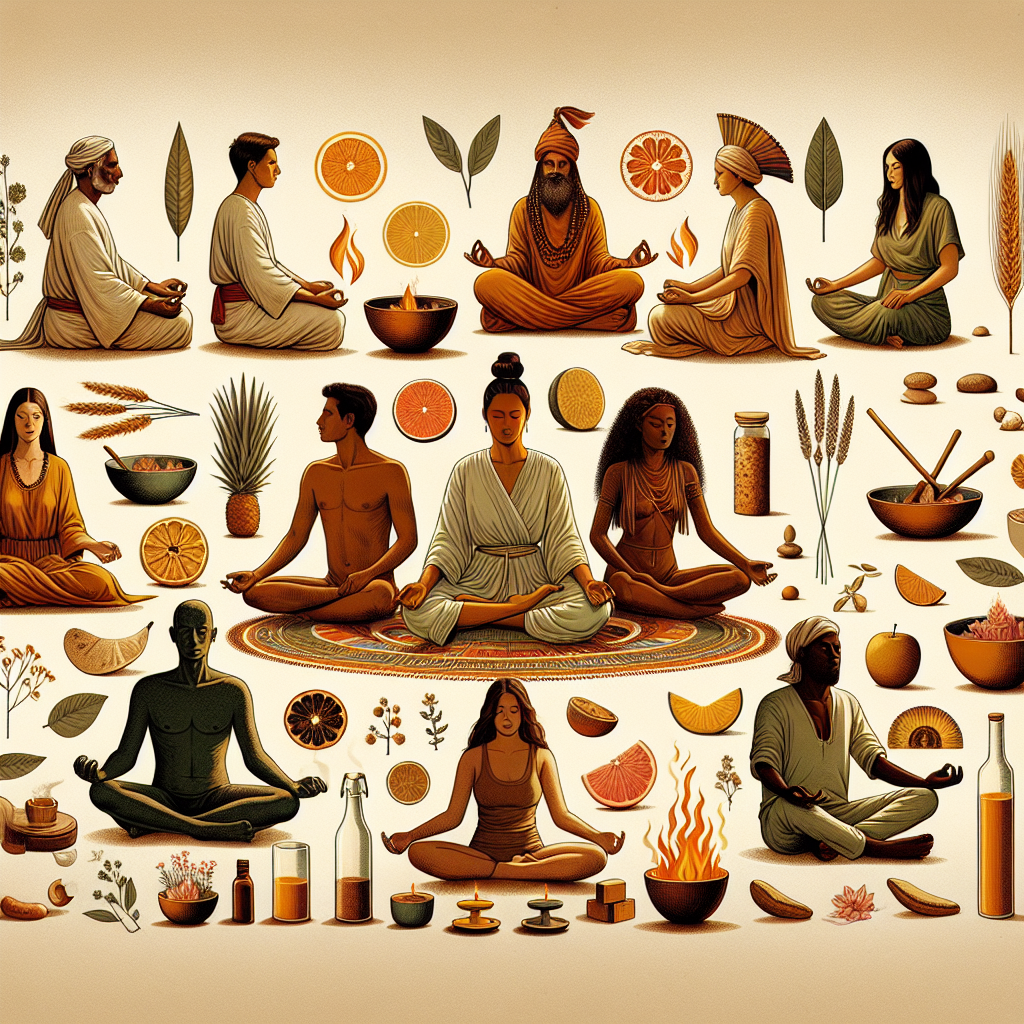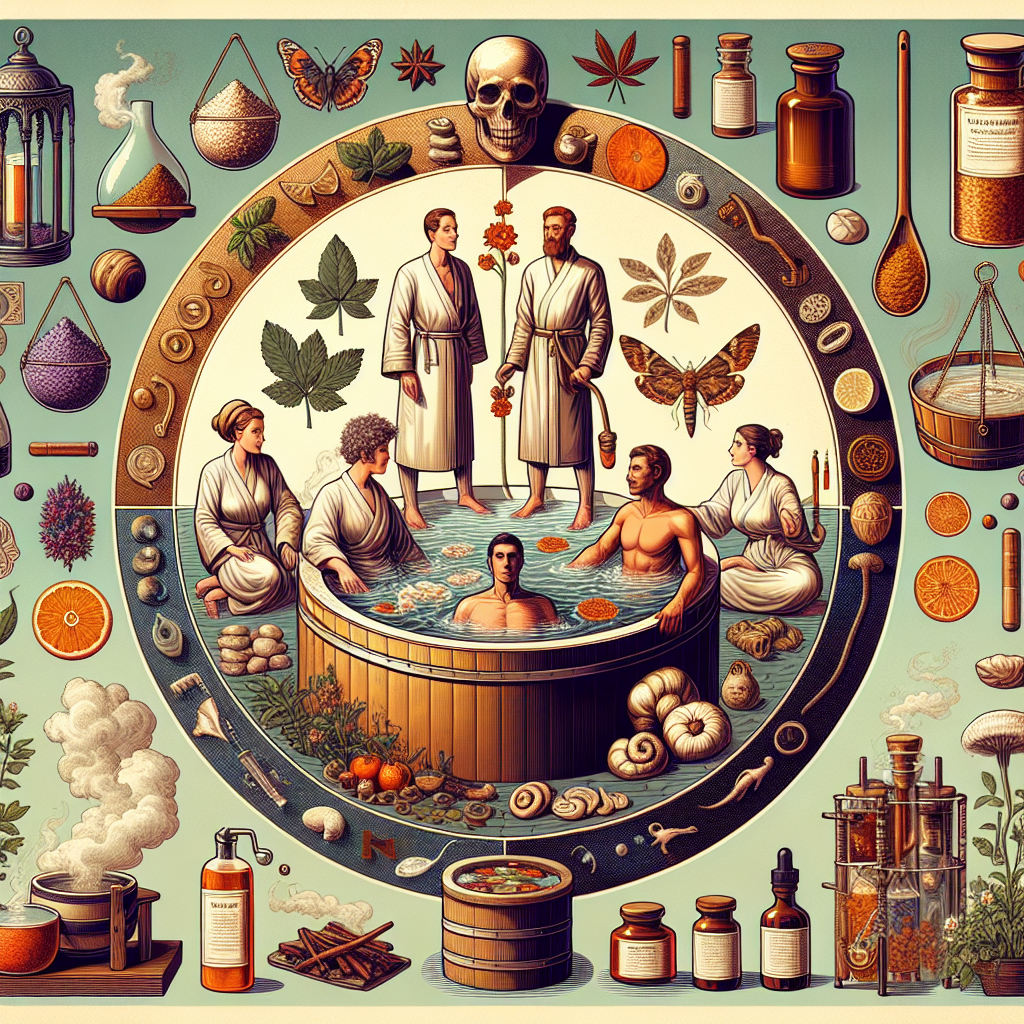Ancient Detox Rituals That Still Work Today

Discover the power of ancient detox rituals that still work wonders today! Uncover the secrets of holistic health and wellness that have stood the test of time. Visit www.myvibrantvitality.com now to start your journey towards a healthier, more vibrant you.
Exploring Ancient Detox Rituals That Are Effective in Modern Times
The quest for health and wellness is as old as humanity itself. From the ancient civilizations to the modern era, people have always sought ways to cleanse their bodies and minds, to restore balance, and to promote overall well-being. Among the myriad of practices that have been passed down through the ages, detoxification rituals hold a special place. These ancient detox rituals, surprisingly, still hold relevance and effectiveness in our modern times.
One of the oldest and most revered detoxification practices hails from the Indian subcontinent. Ayurveda, a holistic healing system that dates back over 5,000 years, advocates for the purification of the body to maintain health and prevent disease. One of the key detoxification methods in Ayurveda is Panchakarma. This comprehensive cleansing process involves five actions – Vamana (therapeutic vomiting), Virechana (purgation), Basti (enema), Nasya (nasal administration), and Raktamokshana (bloodletting). These procedures, though they may sound daunting, are designed to eliminate toxins and restore the body’s natural balance. Today, Panchakarma is still practiced in Ayurvedic clinics worldwide, and many modern detox programs incorporate elements of this ancient ritual.
Moving to the Far East, Traditional Chinese Medicine (TCM) also offers a wealth of detoxification wisdom. TCM emphasizes the importance of maintaining the flow of Qi, or vital energy, throughout the body. When this flow is blocked, toxins can accumulate, leading to illness. Acupuncture, a key component of TCM, is used to stimulate specific points on the body to restore the flow of Qi and facilitate detoxification. Modern research has shown that acupuncture can indeed help to eliminate toxins, reduce inflammation, and improve liver function, making it a valuable tool in any detox program.
In the Americas, indigenous cultures have long used sweat lodges as a means of purification. These structures, heated by hot stones, create a sauna-like environment where participants can sweat out toxins. The ritual also often includes prayer and meditation, adding a spiritual dimension to the physical cleanse. Today, the benefits of sweating as a detox method are well recognized. Saunas and steam rooms are common features in spas and health clubs, and many people find that a good sweat session helps them feel refreshed and revitalized.
Finally, we turn to the Mediterranean, where the ancient Greeks and Romans practiced fasting as a means of detoxification. They believed that abstaining from food allowed the body to rest, repair, and cleanse itself. Today, intermittent fasting has become a popular health trend, with numerous studies supporting its benefits for weight loss, blood sugar control, and overall health.
In conclusion, these ancient detox rituals have stood the test of time for a reason. They offer natural, holistic ways to cleanse the body, restore balance, and promote health. While they may have been developed in a different era, their principles are just as relevant and effective today. Whether it’s through Ayurvedic Panchakarma, Chinese acupuncture, indigenous sweat lodges, or Greek and Roman fasting, these ancient practices offer valuable insights into how we can detoxify our bodies and minds in our modern world.
The Relevance of Ancient Detox Rituals in Today’s Health and Wellness

The relevance of ancient detox rituals in today’s health and wellness landscape is a testament to their enduring efficacy. These time-honored practices, which have been passed down through generations, continue to offer a wealth of benefits for our physical, mental, and emotional well-being. Despite the advent of modern medicine and technology, these ancient detox rituals still hold a significant place in our lives, offering a holistic approach to health that is often overlooked in our fast-paced, modern world.
One of the most well-known ancient detox rituals is fasting. This practice, which involves abstaining from food for a certain period, has been used for centuries by various cultures around the world. Fasting is believed to help the body eliminate toxins, improve digestion, and boost overall health. Today, intermittent fasting has gained popularity as a weight loss strategy, but its roots are deeply embedded in ancient wellness practices.
Another ancient detox ritual that has stood the test of time is the use of sweat lodges. Indigenous cultures, particularly Native Americans, have long used sweat lodges as a means of purification. The intense heat and steam in these lodges are believed to help the body expel toxins through sweat. Today, this practice has evolved into modern-day saunas and steam rooms, which are common features in many gyms and wellness centers.
The practice of dry brushing, which originated from the Ayurvedic tradition, is another ancient detox ritual that is still relevant today. This involves brushing the skin with a dry brush to remove dead skin cells and stimulate blood circulation. It is believed to help detoxify the body by promoting lymphatic drainage. Today, dry brushing is a popular spa treatment and is also commonly done at home as part of a regular skincare routine.
Herbal detoxification is another ancient practice that continues to be relevant in today’s health and wellness scene. Various cultures have used herbs and plants for their medicinal properties, including their ability to cleanse the body of toxins. Today, herbal detox teas and supplements are widely available, offering a natural way to support the body’s detoxification process.
Lastly, the practice of meditation and deep breathing exercises, which have been used for thousands of years, are also effective detox methods. These practices help to calm the mind, reduce stress, and promote a sense of well-being. They also help to improve the flow of oxygen in the body, which can aid in the detoxification process. Today, these practices are integral parts of yoga and mindfulness programs, which are widely recognized for their health and wellness benefits.
In conclusion, the relevance of ancient detox rituals in today’s health and wellness landscape is undeniable. These practices offer a holistic approach to health that goes beyond physical well-being. They promote mental and emotional balance, which is just as important in achieving overall health. Despite the advancements in modern medicine, these ancient detox rituals continue to provide a wealth of benefits, proving that sometimes, the old ways are still the best ways.
Rediscovering Ancient Detox Rituals and Their Benefits in the 21st Century
In the hustle and bustle of the 21st century, we often find ourselves overwhelmed by the demands of modern life. The constant exposure to environmental pollutants, processed foods, and stress can take a toll on our bodies, leading to a buildup of toxins. This accumulation can negatively impact our health, causing fatigue, skin problems, and even chronic diseases. To combat these issues, many people turn to detoxification methods. Interestingly, some of the most effective detox rituals have been around for centuries, passed down through generations and across cultures.
One such ancient detox ritual that has stood the test of time is fasting. Originating from various religious and cultural practices, fasting involves abstaining from food or drink for a certain period. This practice allows the body to rest, repair, and cleanse itself from toxins. Modern science has validated the benefits of fasting, showing that it can improve metabolic health, enhance brain function, and even extend lifespan.
Another age-old detox ritual is the use of sweat lodges. Indigenous cultures, particularly Native Americans, have long used sweat lodges as a means of purification. The intense heat and steam in these lodges cause participants to sweat profusely, thereby eliminating toxins through the skin. Today, this practice has evolved into modern sauna and steam room therapies, which are widely recognized for their detoxifying effects.
Herbal detoxification is another ancient practice that remains relevant today. For thousands of years, traditional Chinese medicine and Ayurveda have utilized herbs to cleanse the body and restore balance. Herbs like dandelion, milk thistle, and turmeric are known for their detoxifying properties, helping to cleanse the liver, improve digestion, and reduce inflammation. Today, these herbs are often incorporated into teas, supplements, and diets for their detox benefits.
Dry brushing, a practice rooted in Ayurvedic tradition, is another ancient detox ritual that has gained popularity in recent years. This involves brushing the skin with a dry brush in a specific pattern to stimulate the lymphatic system, which plays a crucial role in eliminating toxins from the body. Regular dry brushing can help improve circulation, exfoliate the skin, and promote detoxification.
Lastly, the practice of yoga, which dates back over 5,000 years, is also a powerful detox tool. Certain yoga poses are designed to stimulate the digestive system and other organs, aiding in the elimination of toxins. Moreover, the deep breathing techniques used in yoga can help cleanse the lungs and increase oxygen flow, further promoting detoxification.
In conclusion, these ancient detox rituals offer a holistic approach to cleansing the body, addressing not just physical health, but also mental and spiritual well-being. They remind us that detoxification is not merely about eliminating toxins, but also about nurturing our bodies, calming our minds, and reconnecting with our inner selves. As we navigate through the complexities of the 21st century, these time-tested practices provide us with effective, natural ways to detoxify our bodies and enhance our overall health. So, whether it’s through fasting, sweating, using herbs, dry brushing, or practicing yoga, let’s embrace these ancient wisdoms and make them part of our modern lives.